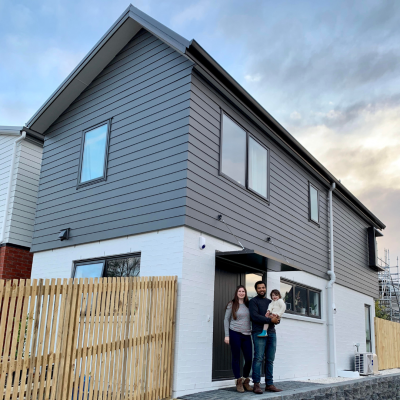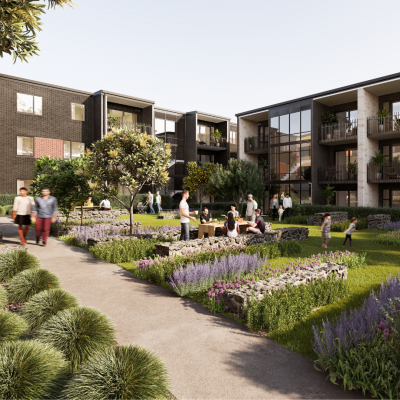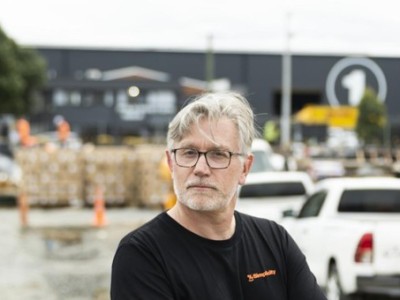Learn » Blog » Why Simplicity invests in unlisted assets
Why Simplicity invests in unlisted assets
Published on 15/05/2023
Topics:
investments
By Sam Stubbs, Simplicity Managing Director
When Simplicity was founded in 2016, 100% of our investments were in passive, index-tracking investments- exposure to over 3,000 listed shares and bonds in 23 countries via Vanguard index funds, with index-linked NZ investments managed in-house by our team. And over 90% of them still are managed this way, with DWS replacing Vanguard as the manager for reasons to do with tax efficiency.
The logic for this is simple. Established share and bond markets are efficient, and while there are many active investors, very few can beat the market, after fees. The data supports this. The S&P Dow Jones SPIVA studies conducted over 30 years, show that more often than not, active fund managers don’t beat the market.
That’s why Simplicity focuses on charging lower fees, and why we still have over 90% of our funds under management invested passively. And it would still be 100%, had we not discovered three areas of unlisted investing where we believe Simplicity now has an enduring competitive advantage. We think this will lead to better long-term returns for members.
This advantage arises from being a nonprofit, 100% owned by a charity, allowing us to operate and invest with a long-term mindset. Unlike for-profit fund managers, we do not have to tailor the way we operate to generate returns for shareholders. And because we are 100% owned by a charity (the Simplicity Foundation) we get pro bono and preferential terms from volunteers, stakeholders and business partners - all of whom want us to do well for our investors.
Our unlisted investments fall into three categories where we believe we have an enduring competitive advantage.
1) Loans secured by first mortgages
This is the easiest to understand.  As we grew our KiwiSaver funds, it became clear to us that we would be investing at scale over the long term. And if we ran the business well, it would keep on growing. In finance, this is called ‘stable’ or ‘sticky’ money. But a lot of this money was being invested in Government and Local Authority bonds, which are lower risk but typically generate lower returns. And at the same time, some members were asking if we would provide them with first home mortgages.
As we grew our KiwiSaver funds, it became clear to us that we would be investing at scale over the long term. And if we ran the business well, it would keep on growing. In finance, this is called ‘stable’ or ‘sticky’ money. But a lot of this money was being invested in Government and Local Authority bonds, which are lower risk but typically generate lower returns. And at the same time, some members were asking if we would provide them with first home mortgages.
So we developed a way to offer first home loans funded by investment from our KiwiSaver and Investment Funds schemes. We could take a small slice of our funds under management, lend to members as competitively priced first home mortgages, and target an investment return on these loans above what those funds would earn from bonds.
While part of that additional return compensates our investors for credit risk, our lending terms are intentionally very conservative and in our first two years we have not had a single loan default. And they help people into their first homes too. And because we only offer mortgage loans to members and operate an online-only model, we don’t incur overhead costs to maintain an expensive branch network or pay for advertising.
The reason why we lend on first home mortgages is simple - we think this is a good long-term investment, and members who borrow to buy their first home get access to competitive interest rates. And the banks aren’t involved at all. We love that equation!
Our diversified KiwiSaver and Investment funds have a benchmark asset allocation of between 3-15% invested in first home mortgages, depending on the fund chosen.
2) Simplicity Living
 The advent of Simplicity Living was, with hindsight, an act of serendipity. Here’s why and how it happened.
The advent of Simplicity Living was, with hindsight, an act of serendipity. Here’s why and how it happened.
Build-to-rent housing (BTR) is very common overseas. Over 40% of people in the OECD live in apartments, and a lot of them are rented long-term and owned by pension funds. Why? They’re a good investment, because people almost always pay their rent. And pension fund providers like the stable long-term returns, which come from a combination of capital growth and rental income.
However, in New Zealand, it has been very hard for pension funds to invest in rental homes, because building costs have been so high. And because investment properties are often standalone houses, it’s been hard for a big investor to buy at scale. And owners of rental properties have typically relied mostly on capital growth to make investment properties work. This worked for many smaller property investors, as long as house prices rose. But all of these factors made large-scale rental housing a tough proposition.
We looked at investing in rental homes previously, but could not make the numbers work. Individual owners and developers were prepared to take a lot more risk on investment properties than we were. I mentioned this to Simplicity’s Patron, Sir Stephen Tindall, and he suggested I meet Shane Brealey of NZ Living.
Shane and his wife Anna had built a company that was already the biggest supplier of homes to KiwiBuild, and at a price that was - literally - unequalled. They have built very high-quality apartments at a completed average cost of $450,000 each, including appliances and curtains. But they wanted to make an even bigger difference by building lots more homes. And they wanted to do it in a way that benefited more New Zealanders, because KiwiBuild turned out to be a one-off windfall for those lucky enough to buy them.
To achieve that they needed a patient, long-term investor. And Simplicity wanted to be able to buy and own quality apartments at a much lower price than the market could currently supply. So we all decided to create Simplicity Living, which is effectively everything NZ Living was, including all their staff and intellectual property.
Simplicity Living shares are currently 100% owned by Simplicity investment funds. The ultimate aim is for Simplicity Living to build, own and rent 10,000 apartments across New Zealand, providing affordable, quality homes for long term renters. The investment returns Simplicity Living aims to produce come in three forms.
The first will be the development margins earned through building villages of 50-300 homes. We expect the homes Simplicity Living develops to have a value 25-30% at completion above what its costs to build them. That is an ambitious aim for many New Zealand property developers, but it’s what NZ Living has already achieved with the 800 homes it has already built in Auckland.
To understand why Simplicity Living can build quality apartments at such a low cost, check out this podcast on Apple or Spotify.
10% of the development margin accrues to investors’ shareholding in Simplicity Living during the development phase of each property, and any extra margin above that will be established on completion of the project, when it is valued.
The second form of returns will be from rental income. This should be reliable, because Simplicity Living is building high-quality apartments from concrete and brick that are typically 10-15% bigger than comparable apartments in the same area. All of this is designed to attract and retain high-quality, reliable tenants who are motivated to pay their rent on time and want to remain in these homes for the long term.
The third way Simplicity Living enhances returns is through vertical integration. Because they buy the land, build apartments, maintain them, and manage the tenancies, they eliminate the margins that would otherwise go to third-party suppliers and managers. Like finance, there is a filo pastry of fees in investment property management. We think Simplicity Living can do it better and cheaper because they will operate at scale, and over the very long term.
And the numbers stack up. The 100-year targeted Internal Rate of Return (IRR - the annual rate of growth that an investment is expected to generate) of Simplicity Living’s properties (which will typically have from 50 to 300 homes) is forecast at an inflation-adjusted rate of 6 to 8% per annum, assuming only GDP growth in capital values and other (in our opinion) very conservative assumptions.
Our diversified KiwiSaver and Investment Funds have a benchmark allocation of between 0-10% invested in Simplicity Living shares, depending on the fund chosen.
Many people buy investment properties hoping to realise high capital gains in the short to medium term - that is not how Simplicity Living is designed to operate. The returns they generate are a combination of capital gains from value added by a very efficient property development process, and stable ongoing rental income enhanced by a low cost, vertically integrated management model.
It’s very early in this journey, and Simplicity Living has only just launched its first village, but the development was delivered on time and within budget, and initial demand from renters has far exceeded expectations, so the signs are very positive.
It’s what many pension funds globally already do, and have done so for a long time. In that sense what we are doing through Simplicity Living isn’t anything new, just new to New Zealand.
3) Venture Capital and Private Equity The idea of investing in these asset classes is simple. For venture capital, it is a very difficult asset class to make money in by picking winners. So we have adopted a more passive approach by buying a stake in Icehouse Ventures, investing in their funds, and mandating them to buy many small stakes in as many credible start-ups as makes sense to them. As those companies grow, we hope to grow with them.
The idea of investing in these asset classes is simple. For venture capital, it is a very difficult asset class to make money in by picking winners. So we have adopted a more passive approach by buying a stake in Icehouse Ventures, investing in their funds, and mandating them to buy many small stakes in as many credible start-ups as makes sense to them. As those companies grow, we hope to grow with them.
This is the proven formula many large offshore venture capital companies have adopted, but it does require the available investment dollars to ‘back the winners’ as they grow and need more shareholder capital. And with this strategy you have to be patient. Fortunately, Simplicity’s investment strategy has a long-term mindset. However, given the small size of New Zealand’s Venture Capital market, this will always be a very small part of our investment strategy.
In private equity, which is where we invest directly in unlisted New Zealand businesses, our investment philosophy is (we think) pretty compelling over the long term, giving us an enduring competitive advantage. The concept is simple - we want to be a minority shareholder in established family businesses. While many of these businesses remain 100% family-owned, every now and then they may want an external investor- to buy out a family member, expand, or pay down debt - the reasons are varied.
That’s where we come in, as a long-term, passive investor. We do not seek seats on the board or wish to exercise any degree of control. We have nothing to add in making established family companies run their business better. And we would typically want a minority stake of 5-10% of shares. But we are a very patient investor, who would want to divest only when the family / majority owner wants to do the same. And we’re 100% New Zealand owned with a passive investment approach, and a nonprofit business ourselves.
Combined, we think this is a very attractive set of investor attributes. Over time, we hope many NZ family-owned businesses will happily have Simplicity as a minority, passive shareholder. And if we acquire, over time, a passive portfolio of minority stakes in (say) 50-100 family-owned companies, we believe we can generate superior returns over the long term in comparison to traditional listed equity investments.
Why? Because family-owned firms stay family owned for a reason - they tend to be quietly profitable! This type of private equity investing is a relatively new idea in New Zealand, and it will take time for family-owned businesses to believe that we will be a great silent partner.
But you have to be patient investing this way - we expect it will take 10 to 20 years to attain scale that will move the needle in terms of overall investment returns in our funds - nonetheless we expect this strategy will reap rewards in the long term.
Private equity and venture capital investments have a benchmark allocation of 0-10% of total investments depending on the fund chosen.
What about the risks?
It is important to note that investments in first home mortgage loans, Simplicity Living, venture capital and private equity are not traded on a recognised securities exchange, are not subject to daily market valuation, and are illiquid as they may take longer to sell if we need to convert them to cash to meet withdrawal requirements. This results in the risks of less frequent valuation of these assets that underlies the value of an investor’s fund holdings, and potentially the inability to redeem these holdings in a timely manner.
To manage these risks we have established valuation policies and protocols for these assets so as to provide regular fair valuations, but this will be less frequent than daily market valuations. We have also developed a Liquidity Management Policy to monitor and manage investment liquidity risks.
Benchmark asset allocations are part of our investment policy, and you can find further details in the Simplicity KiwiSaver Statement of Investment Policy and Objectives (SIPO) and Simplicity Investment Fund Statement of Investment Policy and Objectives (SIPO).
For details on unlisted investments in our KiwiSaver Funds, go to: simplicity.kiwi/kiwisaver/funds/
And for Investment Funds, go to: simplicity.kiwi/investment-funds/funds/
And to see a table with the ‘before’ and ‘after’ allocations, please go to: simplicity.kiwi/learn/updates/increased-asset-allocations/
Getting to these benchmarks will take time because we have to build one home, issue one mortgage, and invest in one company at a time. But time is our friend %)
There will be some investors who firmly believe that 100% of assets should always be invested passively. We used to believe that too. But as we have grown our investment strategy has developed to recognise that where we identify an enduring competitive advantage, as we believe we have in first home mortgage lending, and long term build-to-rent housing and private equity investments, it is in our members’ interests to try to unlock that potential.
And by investing this way we’re also helping house New Zealanders, foster home-grown innovation and grow successful companies too %)


